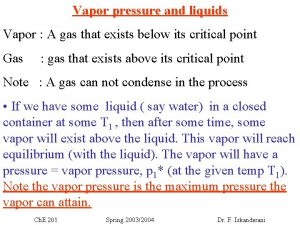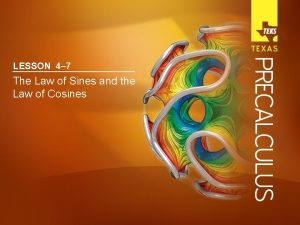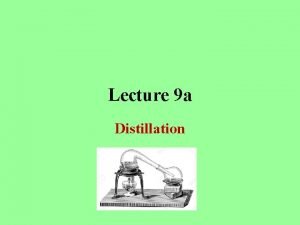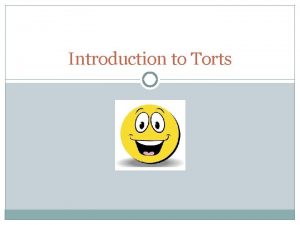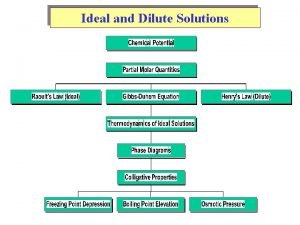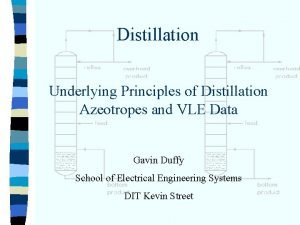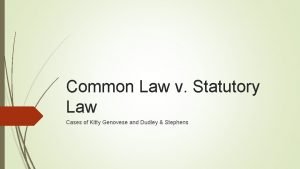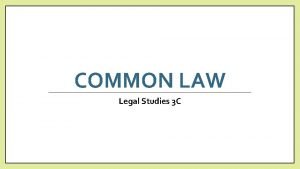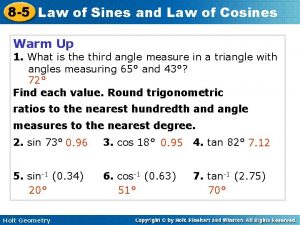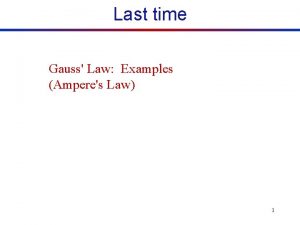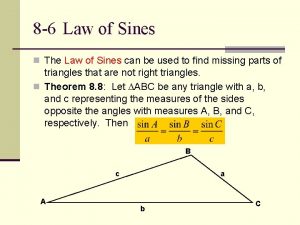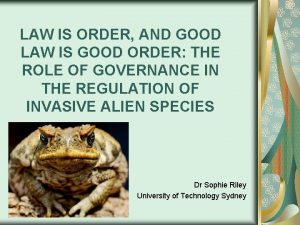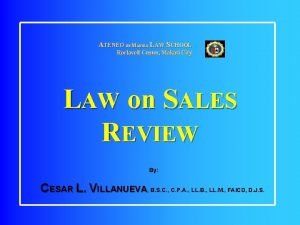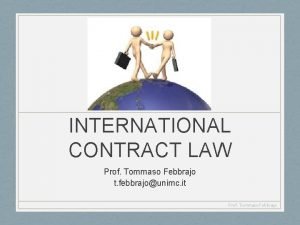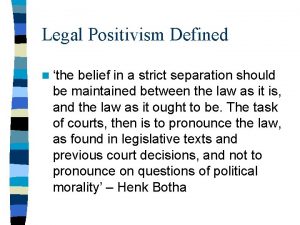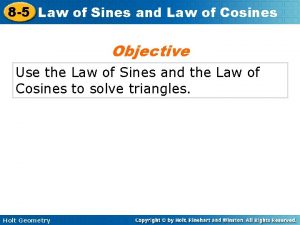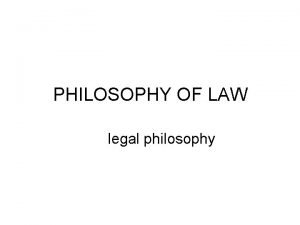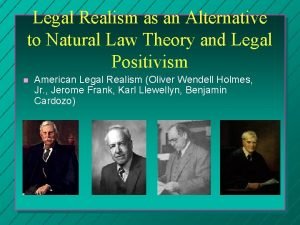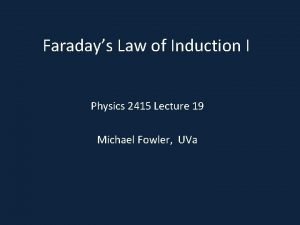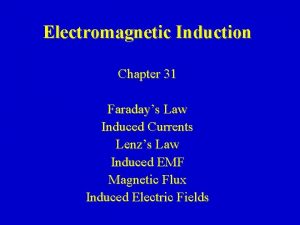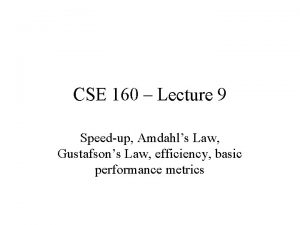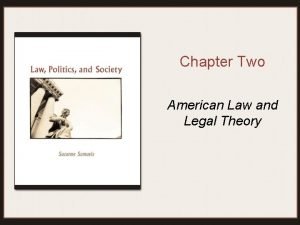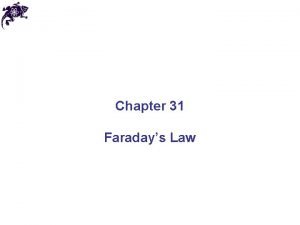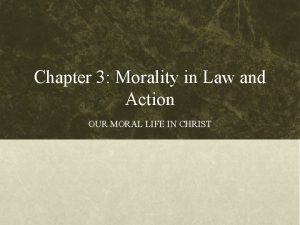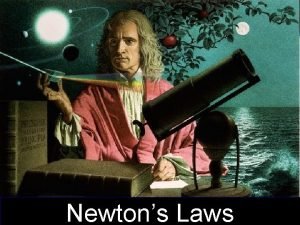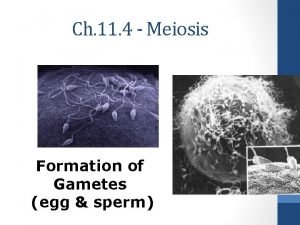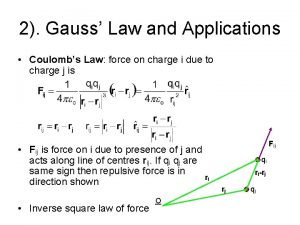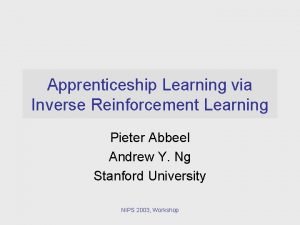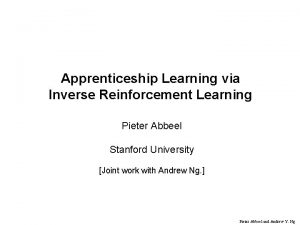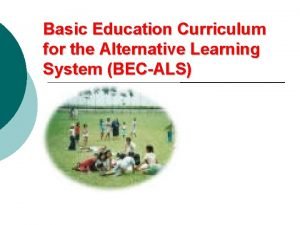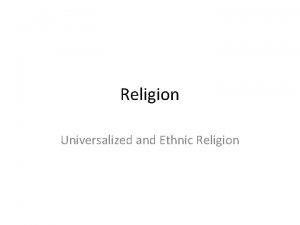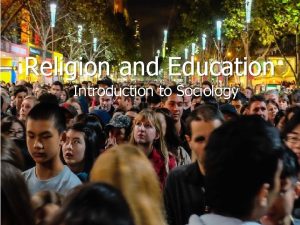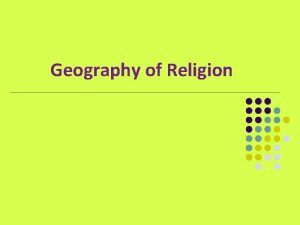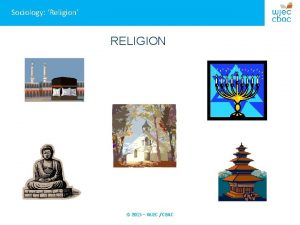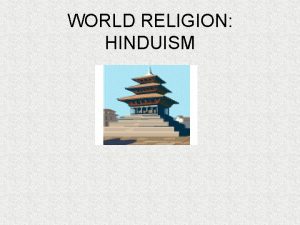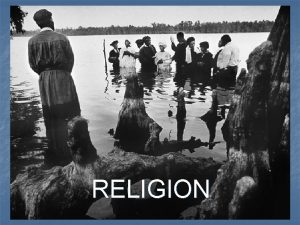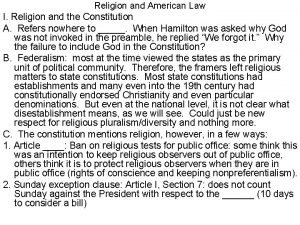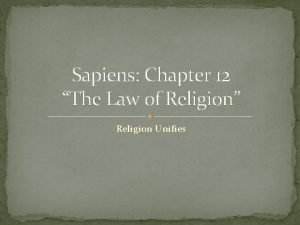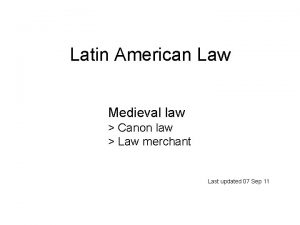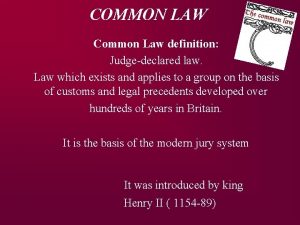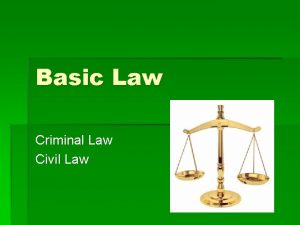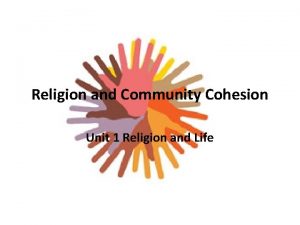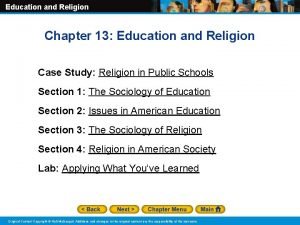Religion Law and Learning Religion Law and Learning























![Religion, Law and Learning Kharijites: North Africa Berber Rebellion 739 [earlier lectures] that had Religion, Law and Learning Kharijites: North Africa Berber Rebellion 739 [earlier lectures] that had](https://slidetodoc.com/presentation_image_h/363c7ddf4dbd37e712557f5823f5c764/image-24.jpg)





















![Religion, Law and Learning [Bennison] Notes: n positive aspects of Almoravid jihad went ‘hand-in Religion, Law and Learning [Bennison] Notes: n positive aspects of Almoravid jihad went ‘hand-in](https://slidetodoc.com/presentation_image_h/363c7ddf4dbd37e712557f5823f5c764/image-46.jpg)





















- Slides: 67

Religion, Law and Learning

Religion, Law and Learning “The Long Process of Islamization”: n For Bennison: ‘thread running through chapters on society and economy’ n For us: process underlying the social, economic and political development of Almoravid and Almohad empires

Religion, Law and Learning Role of Urban Centres: n From early conquests: towns centres of administration, trade, markets n Also learning: mosques built, scholars attracted n Medrasa [Islamic schools]: mid-11 th C. in East, post-Almohad in West

Religion, Law and Learning Islamic Learning: n Also limited to Elite, those with Arabic n Even in East, few mosques built in rural areas; West even less so (mountains, desert) n Rural Islam more about practice (e. g. prayers) than ‘learning’ per se

Religion, Law and Learning Evidence: how do we know what we know? n shaped by urban, Arabic character of ‘learning’ n Texts we have from cities like Qayrawan (Maghreb), Cordoba (Andalusia) n Little sense of how majority of population experienced Islam and its development

Religion, Law and Learning ‘Berber Empires’: played crucial role in development of Islam itself – especially Malikism n Al-Andalusia: religious, intellectual frontier between Christendom and Islam (North Africa) n Ifriqiya: “portal for Western dissemination of Eastern Islamic learning”

Religion, Law and Learning Religious Learning (pre-Almoravid era): n Covers material not addressed by Hoyland: ties his study of ‘conquest’ era to 9 th c. to Bennison’s 11 th - 13 th n Important: cannot separate religion from learning and law – ‘Islamization’ IS evolution law, education, economy, social values….

Religion, Law and Learning “Islamization” is not about individual ‘conversion’: n Is about what becoming ‘Muslim’ means for society n Post 8 th c: is about Muslim societies evolving, changing, responding to various new ideas – and challenges

Religion, Law and Learning Post-Prophet era: Dynamic period of cultural and legal evolution that saw emergence of. . . n Key legal/juridical schools n Critical debates over religious authority n Challenges of ‘mysticism’ (sufism)

Religion, Law and Learning Islamic law in the making: n Schools of thought named after scholars who developed ideas, writing, that were accepted as base for understanding how the Qur’an should be translated into practice n Different ideas, scholars ‘accepted’ in different regions, times – depending on local situation

Religion, Law and Learning Examples: n Abu Hanifa (8 th C): emphasized ‘rational opinion’, reasoning n Malik b. Anas (8 th C): emphasized ‘practice’, custom in Medina (site of first Muslim community) n also hadith – sayings of Prophet as ‘approved’ by him (small collection): book al-Muwatta

Religion, Law and Learning Examples: n Jafar al-Sadiq (8 th C): included Alid (Shia) imams and their ‘sayings’ n Al-Shafi’i (9 th C. ): student of Malik – brought differences between ‘schools’ together in ‘process’: - Qur’an; hadith; consensus of community; analogy (reasoning based on precedence)

Religion, Law and Learning Examples: n Ahmad ibn Hanbal (9 th C- Baghdad): emphasized hadith – but larger collection that ‘approved’ by Malik

Religion, Law and Learning Understanding Role of Hadith: central to divisions n Malikism: limited to ‘the approved’; even these secondary to ‘practice’ (sunna) n Shafi’ism: drew on larger body being collected, evrified by ‘traditionalists’ n served as basis for later Hanbalists

Religion, Law and Learning Major schools of thought: Maliki, Hanafi, Shafi, Hanbali [all Sunni – for Shia, see Isma’ili] n Emerged gradually, across Islamic world between 8 th and 10 th centuries n Scholars moved between them, studied across ‘caliphate’ – like al-Shafi, sought to combine, reconcile, address local issues

Religion, Law and Learning Not to say that ‘conflicts’ did not emerge: n During same era: those who followed one ‘school’ over another could become defensive n Example: Followers of Malikism enraged by ‘treason’ of al-Shafi (embracing non-approved Hadith) said to have had him murdered

Religion, Law and Learning Also part of ‘process’ of Islamization in West: n Interaction with/absorption of – ideas of Judaism and Christianity (as developed in Europe – through ‘portal’ of al-Andalusia in particular) n Began to engage with same philosophical questions, draw on shared legal practices (deriving from shared commercial networks) [more on commercial aspects ‘Discussion Class’, Mar. 17]

Religion, Law and Learning Result in West: domination of Malikism (Maghreb, al-Andalus) n Role of Jurist “Sahnun” who studied in North Africa (Qayarwan: Malikism, Hanafism); then in East n produced “ Mudawwana”: most widely used book of Islamic law in al-Andalusia, Maghreb

Religion, Law and Learning Malikism: Drew on two sources for legitimacy - Malik b. Anas – al Muwatta - Sahnun – al Mudawanna Bennison: ‘overall, Maliki ‘practioners’ were very resistant to other religio-legal approaches’

Religion, Law and Learning The caliph vs. the ulama: Who had the ultimate religious authority? question answered differently in different parts of Islamic world: n in west “relationship evolved along its own trajectory with the assertion of the ruler’s authority coming to the fore in the 10 th C, surging to a peak with Almohads” [Bennison] n

Religion, Law and Learning Mystics and Sufis: ‘pietistic asceticism’: combined many influences including pre-Islamic elements n neo-Platonism (via Arab translation of Greek) influenced more intellectual strands n n Others purely charismatic

Religion, Law and Learning Challenges of sufism: both ‘types’ of sufism worried legal scholars and political authorities: strong potential for popularity with uneducated population n n. North Africa exposed to all religious trends fromn East through travelers, traders, those making the hajj

Religion, Law and Learning Other Influences: Karijism n arose in East [refer back to Lectures on Hoyland, Ch 6] head of Caliphate should be most capable rather than elite Quraysh Arab ancestry n n many in army in North Africa 8 th c.
![Religion Law and Learning Kharijites North Africa Berber Rebellion 739 earlier lectures that had Religion, Law and Learning Kharijites: North Africa Berber Rebellion 739 [earlier lectures] that had](https://slidetodoc.com/presentation_image_h/363c7ddf4dbd37e712557f5823f5c764/image-24.jpg)
Religion, Law and Learning Kharijites: North Africa Berber Rebellion 739 [earlier lectures] that had drawn in al-Andalusia led by Kharijites n n developed two ‘schools’, both moderate n most well-known, long-term influence: Ibadis

Religion, Law and Learning Ibadi Kharijites: turned towards interior: spread Islam as far as northern desert edges n kept in touch with scholars in Iraq but developed distinctly North African tradition centred in Mzab (oasis region, southern Algeria) n

Religion, Law and Learning Ibadis in Mzab: n. Developed austere priest-like social/political organization based on local council (Bennison notes): 11 th c. . group whose appearance – shaved heads, white robes – revealed close Christian connections n

Religion, Law and Learning Other Influences: Alids fleeing Abassids settled in Egypt: 756 led uprising, failed n Idris b “Abd Allah led group to Morocco (plains near Meknes): founded city of Fez n

Religion, Law and Learning Alids: coinage shows he claimed leadership (imam) on basis of descendance from the Prophet (via Ali) n “person rather than text base” of religion appealed to many Berbers in West n n number of ‘imams’ emerged: took title of ‘mahdi’

Religion, Law and Learning ‘the Mahdi’: messianic title meaning “Recipient of God’s Guidance” n political, religious leader of Prophet’s ancestry who would ‘renew Islam’ and institute ‘true Justice’ n

Religion, Law and Learning ‘The Mahdi’: concept became most well articulated among Shia n but in pre-Almoravid era: belief in the coming of a mahdi to renew Islam was common and widespread in the West [hence the ease with which Ibn Tumart arose in early 12 th century] n

Religion, Law and Learning Other Influences: ‘pseudo-Islamic’ cults similar to what we saw previously in far East (Persian-Turkish provinces) n ‘slow process’ of Islamization through medium of local, pre-Islamic cults n n blended ideas: e. g. prayer practices, foods

Religion, Law and Learning ‘Pseudo-Islamic’ cults: example: Bargharwata Berbers (Atlantic plain region Morocco) n chose one of their own chiefs as ‘prophet’, created Berber version of Qur’an [met them in earlier n lecture, also ‘Almoravid-Almohad’ video] n natural ‘enemy’ for Almoravids

Religion, Law and Learning Isma’ili Shiism n 9 th century: several schools thought vied for prominence – Kkarijitism, Hanafism as prominent in places like Qayrawan as Malikism 10 th century: ‘Alid influence “washed over Maghreb”inform of Isma’ili Shiism (da’wa or ‘mission) n

Religion, Law and Learning Isma’ili ‘Mahdi’: n Abu Abdallah al-Shi’i: proselytized among Kutama Berbers (Ifriqiya) n took refuge Sijilmassa to avoid rivals reinforced existing ‘Mahdi tendencies’; facilitated influence Shia Alids across Maghreb, into al. Andalusia, into Saharan fringes n

Religion, Law and Learning Beliefs: n line of imams descended directly from Ali, Fatima via Isma’il b. Jafar al-Sudiq “living infallible guides” n. Believed imams moved between periods of ‘other worldly concealment’ and active engagement with real world characterized by probity (integrity, honour) and justice: proclamation ‘Abu Abdallah as beginning of one such era

Religion, Law and Learning Influences: Neo-Platonism, Mu’tailism n ‘debate’: Mu’tazili argued Qur’an ‘created’; Traditionalists argued ‘eternal, co-existed with God attractive to Kutuma Berbers: idea of divinely inspired imam + era of ‘revolutionary justice’ that could empower them vis-à-vis enemies [Bennison] n ulama of Qayrawan attracted to sophisticated theology/philosophy n

Religion, Law and Learning ‘Abu Abdallah: ‘Caliph-Imam’ n returned to Ifriqiya 909: Fatimids declared ‘Shi’ism’ as state religion changed dynamics: other ‘schools’ became more defensive, exclusionary n especially important moment for Malikis: emergence new scholars, new books – direct attempt to counteract influence of Shi’ism n

Religion, Law and Learning Re-engagement with Shafi’ism, reasoning, returned to ‘eternalist’ view of Qur’an n gave new strength to Malikism eventually able to defeat political power of Fatimid Isma’ilis (970 s) n

Religion, Law and Learning Developments under Almoravids and Almohads: “Under their ‘missions’… the contours of Maghribi Islam with its combination of Maliki Sunnism and the cult of Holy Men had emerged” n n what does Bennison mean by this

Religion, Law and Learning Religious life in Maghreb, al-Andalus mid-11 Century (above discussion): moment when Yahya b. Ibrahim made the hajj and returned to home to desert Sanhaja with ‘preacher’ Ibn Yasin. n n. Movement that emerged reflected Malikism of that time, characterized by: puritanicalism, notions of jihad including concept of ribat

Religion, Law and Learning Ibn Yasin’s Malikism: n Bennison speaks of Ibn Yasin as ‘a charismatic holy man’ we now see that there were many others like him – mystics, mahdis n had very strict interpretation of Maliki fiqh (jurisprudence) – jurist/s called faqih/fuqaha n

Religion, Law and Learning Ribat: n had come to mean scholarly, ascetic but often also militant community n. Dedicated it n. Men to spreading the faith and/or defending of the ribat “al-murabitun” or Almoravids: much discussion of how much they brought to understanding of both jihand ribat

Religion, Law and Learning influences can be traced from Cordoba to Qayrawan n n. Jurist who then became judge in Almoravid’s southern Saharan capital of Azuggi driven by jihand section Maliki fiqh: warfare last resort after requests of ‘enemy’ to convert or submit and pay tax n

Religion, Law and Learning Modifications in al-Andalus: n fiqh modified in more urban, sophisticated alandalus: elites considered themselves more educated n. Almoravid and reform jihad became one of ‘moral renewal n. Almoravids and al-Andalusian jurists allied against ‘immoral’ Ta’ifa princes

Religion, Law and Learning “New concept of jihad”: n emphasizing renewal and reform and ending of illegal taxes became means of unifying before launching military jihad against Christians n n. Produced new scholars who then spread Almoravid law from al-Andalus through Maghreb creating single religious system Seville - Fez
![Religion Law and Learning Bennison Notes n positive aspects of Almoravid jihad went handin Religion, Law and Learning [Bennison] Notes: n positive aspects of Almoravid jihad went ‘hand-in](https://slidetodoc.com/presentation_image_h/363c7ddf4dbd37e712557f5823f5c764/image-46.jpg)
Religion, Law and Learning [Bennison] Notes: n positive aspects of Almoravid jihad went ‘hand-in -hand’ with certain rigidity n. Had potential to become oppressive, stiffling alternative approaches n. Especially of proponents of such approaches also constituted potential political challenge (e. g. Almohads [see below]

Religion, Law and Learning One example: Sufism, Mysticism n important example was Abu Hamid Mohammed al-Ghazali (late 11 th/early 12 th C. ) n. Shafi’I scholar from East n. Consistent with Sunni Islam in general but very controversial for several reasons

Religion, Law and Learning Al-Ghazali: n most important of these: saw class of ulama (religious scholars) as “worldly, power hungry, selfseeking” n Why? Because they did not allow for sufism n. Al-ghazali argued for sufi component to Shafi’ism/Malikism

Religion, Law and Learning Al-Ghazali in al-Andalusia: n his books introduced into al-Andalusia near end of 11 th c. n immediately opposed by Almoravid jurists n. Books purged, burned on several occasions both in al-Andalusia and later Maghreb (where influence also spread)

Religion, Law and Learning How to understand? n concerns about, hostility towards spread of sufism and influence of al-Ghazali must be understood in terms of extent to which Alid influences – emphasis on mahdism – were penetrating the West (Magreb-al-Andalusia) considerable ‘overlap’ between practise of sufism and activities of mahdis n

Religion, Law and Learning Mahdism: n as we have seen (above): Mahdism prevalent in both Sunni and Shi’a circles by early 12 th century n. Example of ‘overlap’, actual political threat: sufi named Ibn Qasi n. Launched mahdist movement in 1142: sought followers, established ribat in al-Andalus

Religion, Law and Learning Ibn Qasi: n gained control over much of Western al-Andalusia before movement began to weaken then sought political alliance with Abd al-Mumin (Maghreb – part of story of Almohads) n n. Significance: “brought ascetic sufism and mahdism together to “forge a resistance movement against the Almoravids and their Maliki fuqaha” [Bennison]

Religion, Law and Learning But not as significant as the Almohads: similar movement from the mountains, valleys south of Marrakesh in 1120 s: leader Ibn Tumart n for some: movement ‘radical synthesis of many trends in 11 th and 12 th century Islam n for others ‘pastiche’ that did not fuse into integrated religious system [Bennison] n

Religion, Law and Learning Ibn Tumart: n drew on Hadith science, Shafi’I fiqh, al-Gazali’s blend of social action and sufism, Shia notions of imams and mahdis [Bennison]: key to Ibn Tumart’s initial religious beliefs was “pure Semitic monotheism” n

Religion, Law and Learning ‘Pure Monotheism’: n meant full knowledge of Qur’an and Hadith and the ‘sciences’ related to their study n. By now ‘methodology’ had developed to assess hadith of Prophet: to dispel doubt (about authority), to avoid speculation (by using Reason) “Reason joined Qur’an and Hadith as sources of law in preference to accumulated Maliki wisdom” n

Religion, Law and Learning Challenge to Maliki jurists: n Maliki fiqh seen as containing ‘unacceptable levelsof Diversity, contradiction and arbitrariness’ Ibn Tumart absorbed al-Gazali’s emphasis on good muslim’s ‘moral duty’ to promote behaviour consistent with Islamic law and to denounce behaviour that was not n

Religion, Law and Learning Ibn Tumart’s ‘Moral Duty’: n developed particularly ‘radical’ view of moral duty [Bennison] speaks to what we know of his journey to Cordoba (from Sus, Morocco) and back to Maghreb – then East to Baghdad [during which time he absorbed the ideas he would promulgate] n on return trip began implementing what he had learned, especially influence of al-Ghazali n

Religion, Law and Learning Used ‘personal violence’ to denounce improper behaviour (according to Islamic law) examples given related to: displays of wealth, ornamentation; musical performances and/or musical instruments; consumption of alcohol; improper ‘mixing’ of men and women; improper ‘gender specific behaviour’ (in general) n

Religion, Law and Learning Bennison points out: literature highlights differences in styles of teaching and learning between Maliki and Almohad jurists Maliki jurists relied on memorisation of early works Maliki authorities n suggested their knowledge of hadith science was ‘minimal or non-existent’ n

Religion, Law and Learning Almohads: n. Ibn Tumart presented as using ‘dialectical, logical methods (of reasoning) either he was ‘recognized master’ or when other jurists attempted to argue against him they were ‘silenced’ by his familiarity with scholastic theology n n[Bennison]: “Almohad Propaganda”!

Religion, Law and Learning Most Important for understanding Ibn Tumart: n. Personal adoption of Sufism: asceticism, celibacy (compare with ibn Yasin!), contemplation – a truly ‘reformist mystic’ n. Strict adherence to sharia: places him in company with al-Ghazali but also al-Andalusian mystics

Religion, Law and Learning From Imam to Mahdi: n. When and why did Ibn Tumart ‘the scholar’ develop from spiritual guide (imam) to Mahdi (politically engaged activist)? n. Key moment [Bennison]: when he was rebuffed by Maliki jurists in Marrakesh

Religion, Law and Learning Mahdi Model: then retreated to Aghmat (first Maghrebian centre of Almoravids) – then crossed the mountains back to place of origin n n. Retreated to a cave: mirroring the Prophet Mohamed’s experience in Mecca and the hijra

Religion, Law and Learning Mahdi Model: transformed rejection to a “necessary stage on the Religious Path” which enabled t he reconstitution of the Masmuda (tribe) into jihadists against the Almoravids n

Religion, Law and Learning Mahdi Model: idea of ‘becoming the mahdi’ may have been specifically the influence of Isma’ili Shi’ism n n. Or just response to more general ‘flow’ of Shi concepts into Sunnism at this time n. Scholars still debating aspects of Ibn Tumarts particular ‘mahdism’

Religion, Law and Learning What is important: disciples, followers saw him as one of long lineof charismatic Berber prophest (including Ibn Yasin) n from his perspectice: he was one of Semitic prophets of the Qur’an and the Judaeo-Christian scriptures whose missions culminated with his own project to restore ‘primordial monotheism’ – convert everyone to “True Path” n

Religion, Law and Learning Concluding Comments:
 Western religion vs eastern religion
Western religion vs eastern religion Newton's first law and second law and third law
Newton's first law and second law and third law Newton's first law
Newton's first law V=k/p
V=k/p Boyle's law charles law avogadro's law
Boyle's law charles law avogadro's law Cuadro comparativo e-learning b-learning m-learning
Cuadro comparativo e-learning b-learning m-learning Raoult's law and dalton's law
Raoult's law and dalton's law Difference between civil law and criminal law
Difference between civil law and criminal law 4-7 law of sines and cosines
4-7 law of sines and cosines Difference between raoult's law and dalton's law
Difference between raoult's law and dalton's law Criminal law plaintiff
Criminal law plaintiff Raoult's law and dalton's law
Raoult's law and dalton's law Bu vle
Bu vle Difference between statute and common law
Difference between statute and common law Doctrine of precedent
Doctrine of precedent 8-5 law of sines
8-5 law of sines Raoult's law and dalton's law
Raoult's law and dalton's law Gauss law and ampere's law
Gauss law and ampere's law 8-6 the law of sines
8-6 the law of sines Law is order and good law is good order
Law is order and good law is good order Dacion en pago vs pactum commissorium
Dacion en pago vs pactum commissorium Common law and civil law
Common law and civil law Examples of civil law
Examples of civil law Tommaso febbrajo
Tommaso febbrajo Sine and cosine rule
Sine and cosine rule Positivism
Positivism 8-5 law of sines
8-5 law of sines Inductive and analytical learning
Inductive and analytical learning Analytical learning vs inductive learning
Analytical learning vs inductive learning Lazy learner and eager learner
Lazy learner and eager learner Deep learning approach and surface learning approach
Deep learning approach and surface learning approach Positive law vs natural law
Positive law vs natural law Natural law vs positive law
Natural law vs positive law Positive law vs natural law
Positive law vs natural law Law of dominance
Law of dominance Positive law vs natural law
Positive law vs natural law Gregor mendel data
Gregor mendel data Faradays law
Faradays law Faraday's law vs lenz's law
Faraday's law vs lenz's law What is faraday's law in physics
What is faraday's law in physics Gustafson's law in computer architecture
Gustafson's law in computer architecture Natural law vs positive law
Natural law vs positive law Faraday's law vs lenz law
Faraday's law vs lenz law Natural law vs positive law
Natural law vs positive law Private law vs public law
Private law vs public law Newton's second law
Newton's second law Ch
Ch Coulomb's law integral form
Coulomb's law integral form Law of independent assortment vs law of segregation
Law of independent assortment vs law of segregation Coulombs law
Coulombs law Planck radiation law
Planck radiation law Lda supervised or unsupervised
Lda supervised or unsupervised Concept learning task in machine learning
Concept learning task in machine learning Analytical learning in machine learning
Analytical learning in machine learning Nonassociative learning example
Nonassociative learning example Deductive learning vs inductive learning
Deductive learning vs inductive learning Apprenticeship learning via inverse reinforcement learning
Apprenticeship learning via inverse reinforcement learning Apprenticeship learning via inverse reinforcement learning
Apprenticeship learning via inverse reinforcement learning Deductive logic definition
Deductive logic definition Pac learning model in machine learning
Pac learning model in machine learning Pendekatan unsupervised learning adalah
Pendekatan unsupervised learning adalah Pac learning model in machine learning
Pac learning model in machine learning Instance based learning in machine learning
Instance based learning in machine learning Inductive learning machine learning
Inductive learning machine learning First order rule learning in machine learning
First order rule learning in machine learning Collaborative learning vs cooperative learning
Collaborative learning vs cooperative learning Alternative learning system learning strands
Alternative learning system learning strands Passive learning vs active learning
Passive learning vs active learning






